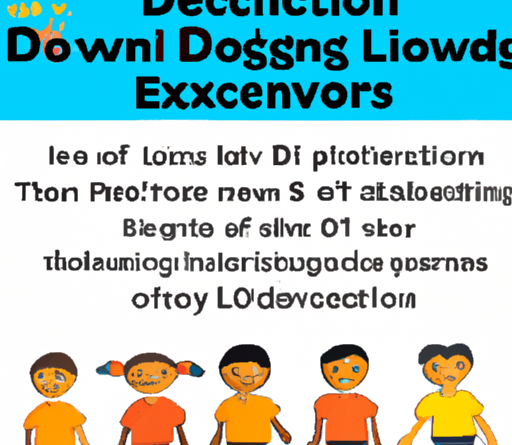
Have you ever wondered how to teach long division to your students? It can be a tricky concept to grasp, but fear not! In this article, we will delve into the world of long division and provide you with helpful tips and strategies to successfully teach it to your students.
Long division can be a challenging topic for students to understand, but with the right approach, you can make it much more manageable. By breaking down the process into smaller, more easily digestible steps, you can help your students grasp the concept and build their confidence. In this article, we will explore different strategies, such as using visual aids and hands-on activities, to engage your students and make learning long division an enjoyable experience. So, if you’re curious about how to teach long division effectively, keep reading, and you’ll soon have all the tools and knowledge you need to guide your students through this mathematical journey.
Table of Contents
How to Teach Long Division to Students

Overview
What is long division?
Long division is a mathematical operation that allows you to divide large numbers into smaller parts. It helps you to find the quotient (whole number) and the remainder when dividing one number by another. Long division can be a challenging concept for students to grasp, but it is an essential skill that lays the foundation for more advanced mathematical concepts.
Importance of teaching long division to students
The ability to perform long division is crucial for students as it not only enhances their numeracy skills but also fosters problem-solving, critical thinking, and logical reasoning abilities. Long division teaches students perseverance, patience, and attention to detail. Furthermore, it provides them with a systematic method to handle complex calculations, which they can apply in real-life situations such as budgeting, measurements, and future mathematical concepts like algebra and fractions.
Preparing for Long Division
Understanding basic arithmetic operations
Before diving into long division, students should have a strong understanding of basic arithmetic operations such as addition, subtraction, and multiplication. These foundational skills will help them comprehend the steps involved in long division and solve problems accurately.
Knowledge of multiplication tables
Having a good grasp of multiplication tables is vital when teaching long division. Students should have memorized the times tables up to at least 10, as division is essentially the inverse operation of multiplication. Reinforcing multiplication facts through regular practice and memorization drills will assist students in performing long division with ease.
Familiarity with place value
Understanding place value is another crucial aspect when teaching long division. Students should be able to identify the value of digits in a number and recognize the relationship between the place value of each digit. For example, in the number 457, the 7 is in the ones place, the 5 is in the tens place, and the 4 is in the hundreds place.
Step-by-Step Guide to Teaching Long Division
Introducing the concept of long division
Start by explaining to students what long division is and the purpose it serves. You can use real-life examples to illustrate its importance and practical applications. Break down the long division symbol (÷) and explain that it represents division, which involves dividing a number into equal parts.
Demonstrating the process with easier examples
Once students have a basic understanding of long division, demonstrate the step-by-step process using simpler examples. Begin with small dividend-divisor pairs where the division is exact, meaning there is no remainder. This will help students grasp the fundamental mechanics of long division without the added complication of remainders.
Practicing division with larger numbers
After students have grasped the initial steps, gradually increase the difficulty level by introducing larger numbers. Start with divisors that are single digits and progress to divisors with two or three digits. This progressive approach allows students to practice their skills and build confidence as they tackle more complex division problems.
Dealing with remainders
When introducing remainders, explain that they occur when the dividend cannot be evenly divided by the divisor. Teach students how to represent remainders in long division using the remainder notation (R) or fractions if applicable. Emphasize the importance of understanding and interpreting the meaning of the remainder in the context of the problem being solved.
Reinforcing the process through repetition
Repetition is key to mastering long division. Offer students ample opportunities to practice long division problems, both in the classroom and as homework assignments. Incorporate a variety of question types, including word problems and real-life scenarios, to help students solidify their understanding of the process and its practical implications.
Effective Teaching Strategies
Breaking down the steps of long division
Long division can be overwhelming for students, so breaking down the steps into manageable parts is essential. Ensure that students understand each step before moving on to the next. This sequential approach will prevent confusion and help students build a strong foundation.
Utilizing visual aids and manipulatives
Visual aids and manipulatives can greatly enhance students’ understanding of long division. Use base ten blocks, place value charts, or division disks to visually represent the process. These hands-on tools provide students with a tangible representation of the division concept, making it easier for them to grasp and internalize.
Encouraging critical thinking and problem-solving
Long division requires students to think critically and problem-solve. Encourage students to analyze and strategize when faced with challenging division problems. Prompt them to explore alternative approaches and discuss different problem-solving strategies. This not only develops their problem-solving skills but also fosters creativity and independent thinking.
Providing individualized support
Every student learns at their own pace, so it is important to provide individualized support during the learning process. Offer extra assistance to struggling students, whether through one-on-one instruction, peer tutoring, or small-group activities. Also, identify and challenge advanced learners by providing enrichment activities or more complex division problems.
Creating a positive learning environment
A positive and supportive learning environment is crucial for teaching long division effectively. Encourage collaboration, open dialogue, and respect among students. Celebrate each student’s progress and offer praise and encouragement. By fostering a positive atmosphere, you can boost students’ confidence and motivation to learn long division.

Common Challenges and Solutions
Student confusion with carrying over
Many students struggle with the concept of carrying over when performing long division. To address this, emphasize the importance of regrouping and clearly explain the process during each division step. Provide plenty of practice problems to reinforce this concept, starting with smaller numbers and gradually increasing in difficulty.
Difficulty in memorizing multiplication tables
Memorization of multiplication tables can be challenging for some students. Implement various strategies to help them memorize and practice multiplication facts, such as flashcards, multiplication games, or online learning platforms. Encourage regular practice both in and outside of the classroom to reinforce multiplication skills.
Lack of conceptual understanding
Some students may struggle with grasping the concept of long division due to a lack of conceptual understanding. Use concrete examples, manipulatives, and visual representations to help students make connections between the abstract concepts and their real-life applications. Provide opportunities for students to explain and discuss their thinking processes to solidify their understanding.
Addressing different learning styles
Students have diverse learning styles, so it is crucial to tailor your teaching methods to accommodate these variations. Use a combination of visual, auditory, and kinesthetic approaches to present information and engage students. Incorporate hands-on activities, group discussions, and multimedia resources to cater to different learning preferences.
Using real-life examples for relevance
Make long division relevant to students’ lives by incorporating real-life examples into your teaching. Show them how long division can be applied in various contexts, such as dividing money, sharing treats among friends, or calculating time. By demonstrating the practical uses of long division, students are more likely to find it meaningful and engaging.
Assessment and Evaluation
Developing appropriate assessment methods
Assess students’ progress and understanding of long division through various assessment methods. Use formative assessments, such as quizzes, classwork, and homework assignments, to track their learning on an ongoing basis. Additionally, incorporate summative assessments, such as tests or projects, to evaluate students’ overall comprehension and application of long division.
Monitoring student progress
Regularly monitor students’ progress throughout the teaching process. Keep track of their strengths and areas for improvement. Adjust your instructional strategies accordingly and provide additional support as needed. Engage in ongoing communication with students to gauge their level of understanding and address any misconceptions promptly.
Providing constructive feedback
Offer constructive feedback to students to help them improve their long division skills. Provide specific praise for their efforts and successes. Additionally, identify specific areas where they can improve and offer suggestions for improvement. Encourage students to reflect on their work and make necessary adjustments based on your feedback.
Identifying areas for improvement
Use assessment data to identify areas where students may need additional instruction or practice. Analyze the patterns of student errors or misconceptions to inform your teaching strategies. Target those areas in future lessons, providing targeted reteaching and differentiated instruction to support students’ individual needs.
Differentiated Instruction
Adapting teaching methods for diverse learners
Differentiated instruction is essential when teaching long division to accommodate the diverse needs of students. Modify the pace and complexity of the lessons based on individual students’ abilities. Offer various resources, such as visual aids, manipulatives, and supplemental materials, to cater to different learning preferences.
Supporting struggling students
Struggling students may require additional support and interventions. Provide extra practice opportunities, offer one-on-one or small-group instruction, and break down complex problems into smaller, more manageable steps. Consider implementing intervention programs or utilizing additional educational resources to help struggling students strengthen their long division skills.
Challenging advanced learners
Advanced learners should be challenged to extend their understanding and apply their skills to more complex problems. Offer enrichment activities or extension projects that push their thinking beyond the standard curriculum. Encourage advanced learners to explain their problem-solving strategies and engage in critical thinking discussions with their peers.
Modifying materials and tasks
Modify instructional materials and tasks to accommodate the needs of diverse learners. Provide alternative versions of worksheets or manipulatives that cater to varying ability levels. Adapt the complexity of word problems, adjust the number ranges for practice problems, or incorporate technology-based resources to engage and challenge students at their individual levels.
Integrating Technology
Utilizing interactive online resources
Integrating technology into long division instruction can enhance students’ learning experiences. Utilize online platforms, such as interactive tutorials, math games, and instructional videos, to reinforce long division concepts and provide additional practice opportunities. These resources can be accessed both in the classroom and at home, promoting independent learning and engagement.
Engaging students through educational apps
Educational apps can make learning long division more enjoyable for students. Look for apps that provide interactive and engaging activities that target specific long division skills. These apps often offer immediate feedback and progress tracking, allowing students to monitor their own learning and make improvements as necessary.
Digital practice exercises and games
Online practice exercises and games can provide students with additional opportunities to reinforce their long division skills. Look for digital platforms that offer a variety of question types, including word problems and multi-step division problems, to help students apply long division in different scenarios. These interactive activities can make the practice more engaging and enjoyable for students.
Collaboration with Parents and Guardians
Communicating the importance of practicing at home
Collaboration with parents and guardians is crucial in supporting students’ long division learning. Communicate to them the importance of practicing long division skills at home and the impact it can have on their child’s mathematical development. Encourage parents to provide dedicated time for practice and offer suggestions for resources that can be used at home.
Providing resources and strategies for reinforcement
Parents and guardians may feel uncertain about how to support their child’s long division learning. Provide them with resources, such as practice worksheets, online tutorials, or recommended books, to help reinforce long division at home. Offer strategies for guiding their child through the long division process and encourage open communication between home and school.
Encouraging parental involvement in the learning process
Encourage parents and guardians to actively participate in their child’s long division learning. Invite them to attend parent-teacher meetings to discuss their child’s progress and areas for improvement. Share strategies and tips on how parents can make long division practice more engaging and effective for their child. By involving parents in the learning process, you create a collaborative partnership focused on the success of the student.
Conclusion
Recap of the key points discussed
Teaching long division to students is an important aspect of developing their mathematical skills and abilities. It lays the foundation for problem-solving, critical thinking, and logical reasoning. By breaking down the steps, utilizing visual aids, and encouraging critical thinking, you can effectively teach long division to students and help them master this essential skill.
Importance of patience and perseverance in teaching long division
Teaching long division requires patience and perseverance as students may find the concept challenging. It is important to provide individualized support, create a positive learning environment, and offer opportunities for practice and reinforcement. By being patient and persistent, you can help students overcome obstacles and achieve success with long division.
Emphasizing the long-term benefits of mastering this skill
Remind students of the long-term benefits of mastering long division. Proficiency in long division is not only important for academic success but also for everyday life. Being able to accurately divide numbers and solve problems involving division is a valuable skill that will continue to benefit them in future math concepts and real-life situations.
Teaching long division may require time and effort, but with the right strategies, resources, and support, students can develop a strong foundation in this essential mathematical operation. By implementing effective teaching methods, addressing common challenges, utilizing technology, and collaborating with parents, you can ensure that students gain a thorough understanding of long division and confidently apply it in various contexts.







